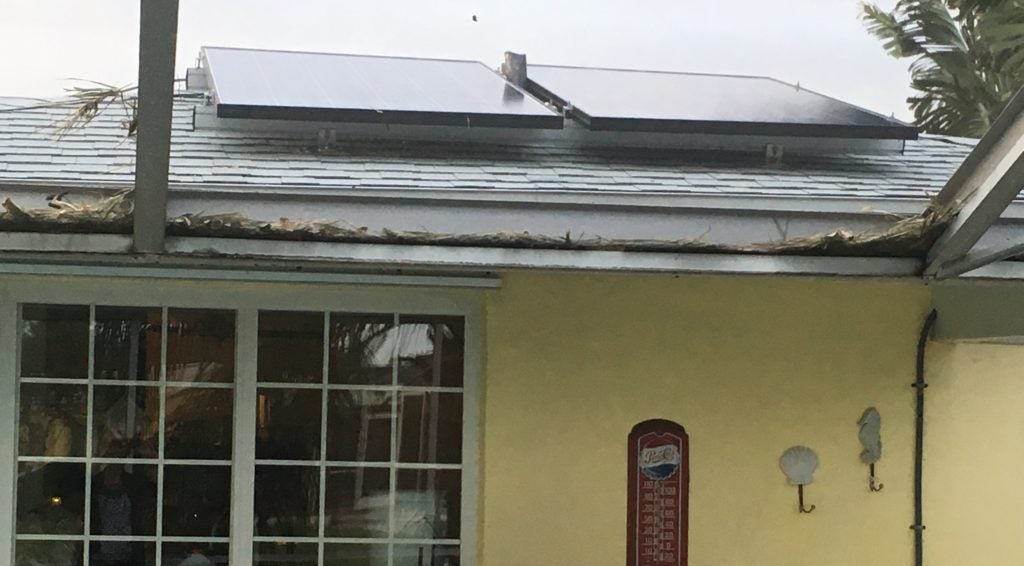How solar weathers the storm

 Solar installations are designed to withstand hurricane force winds. Hurricane Matthew put these designs to the test recently. As we continue the cleanup from the storm, it’s worth taking a look at how solar systems fared.
Solar installations are designed to withstand hurricane force winds. Hurricane Matthew put these designs to the test recently. As we continue the cleanup from the storm, it’s worth taking a look at how solar systems fared.
Merritt Island resident Lori Cunniff’s home experienced 110 mph winds and downed trees, but is she is happy to report that her solar system had no problems.
Further inland, in Orange County, Michael Cohen’s system withstood 60+ mph winds and hard rain. Not only were his panels unaffected by the wind, but his system actually produced about 4.6 kWh of electricity the day of the storm.
Their systems were able to withstand the storm because of rules in place for installing solar. All solar systems in Florida must be designed to withstand hurricane-force winds. Before a solar company can install a system on your home they must have the system design reviewed and approved by the Florida Solar Energy Center (FSEC). Solar installers will take care of submitting all engineering designs and paperwork to FSEC.
These designs, and your system must pass local building codes, which require that solar panel installations meet wind uplift requirements. These requirements will vary depending upon where you are in the state, as some localities have higher requirements than others. The code requires systems to be securely fastened to your roof. This is done to ensure your system remains attached during a storm. If you have gone solar, be sure to let your insurance company know, so that your system will be included in your policy should your system see damage from a storm.
